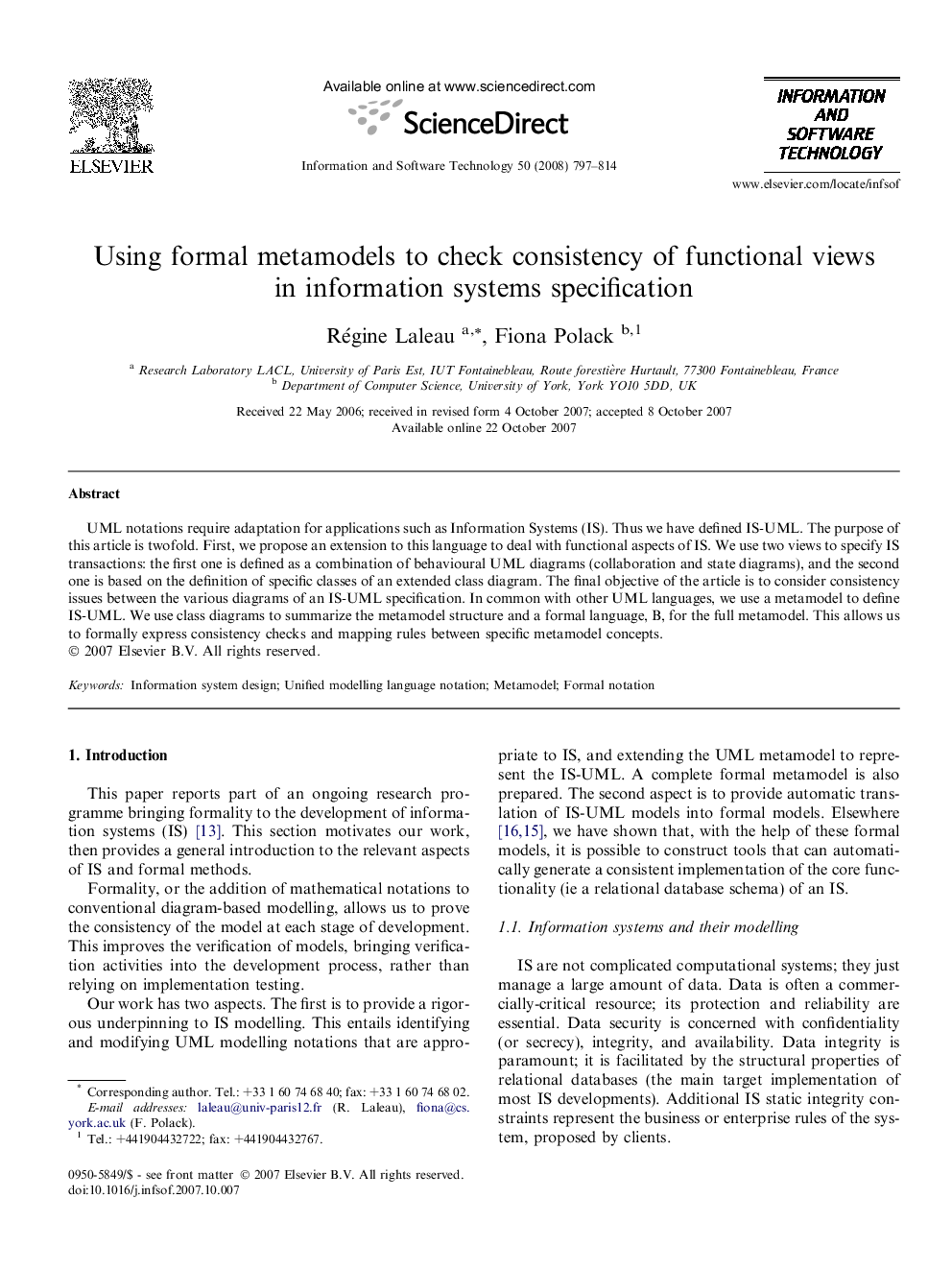| Article ID | Journal | Published Year | Pages | File Type |
|---|---|---|---|---|
| 549943 | Information and Software Technology | 2008 | 18 Pages |
UML notations require adaptation for applications such as Information Systems (IS). Thus we have defined IS-UML. The purpose of this article is twofold. First, we propose an extension to this language to deal with functional aspects of IS. We use two views to specify IS transactions: the first one is defined as a combination of behavioural UML diagrams (collaboration and state diagrams), and the second one is based on the definition of specific classes of an extended class diagram. The final objective of the article is to consider consistency issues between the various diagrams of an IS-UML specification. In common with other UML languages, we use a metamodel to define IS-UML. We use class diagrams to summarize the metamodel structure and a formal language, B, for the full metamodel. This allows us to formally express consistency checks and mapping rules between specific metamodel concepts.
